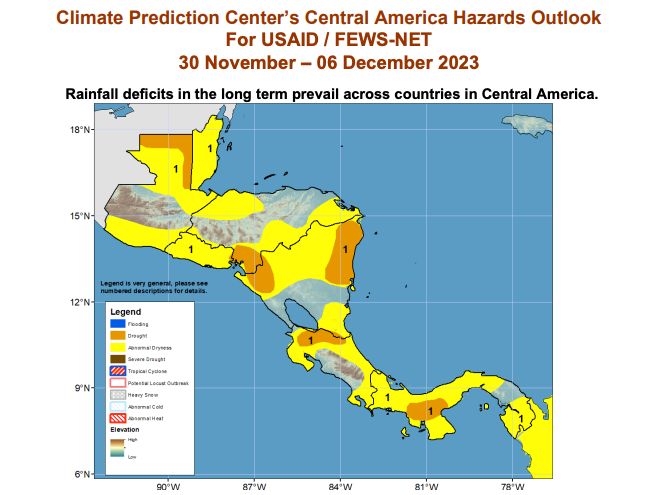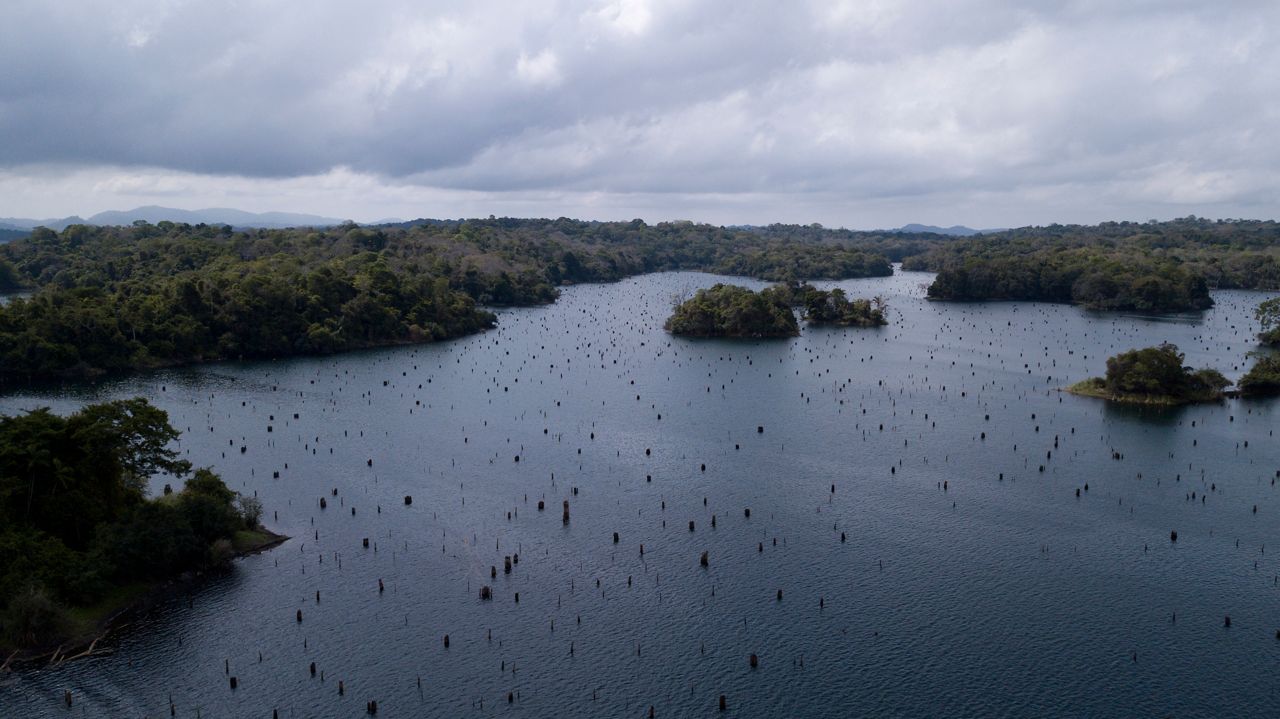Many shipping vessels are being forced to forgo or take a detour from the “world’s greatest shortcut” as ongoing drought conditions impact the infamous Panama Canal.
The Panama Canal Authority (ACP) continues to reduce the number of ships that pass through the canal each day as El Niño continues to drive worsening drought conditions in the region.
Delays in shipping through the winter will not only add a layer of stress amidst the busy holiday season, but will also hike up costs as demand for items increases and transit prices rise.
Panama’s predicament
Located just north of the equator, Panama has tropical conditions year-round, but still experiences two distinct seasons: a wet and a dry season.
From May through December, Panama’s long wet season accounts for most of the country’s annual rainfall. October and November usually bring in the most rain before transitioning into the dry season.
According to data from World Bank Group, Panama sees about 74.8 inches of rain per year, on average. However, rainfall totals vary across the narrow isthmus, with the Caribbean side typically seeing more rain than the Pacific side.
During El Niño years, though, much of northern South America extending up through Central America sees below-average precipitation, triggering drought conditions for many. This holds true in 2023.
The country reported drier-than-normal conditions at the end of their dry season earlier this year, but below-average precipitation during the wet season only exacerbated drought issues.
Despite typically being one of Panama’s wetter months, this past October ranked as the driest on record since 1950.
While rainfall totals for that month were down about 41% from average, water levels at Gatun Lake, a manmade lake that makes up an essential part of the Panama Canal route, dropped to historic levels, too.
Drought caused low water levels at Gatun Lake back in April 2019. (AP Photo/Arnulfo Franco)
To operate smoothly and efficiently, the Panama Canal uses water from Gatun Lake to facilitate ships through each of the canal’s three locks. When water levels become too low, the locks’ ability to raise and lower ships becomes inhibited.
In its 109-year history, the Panama Canal has only shut down three times, none of which were due to low water levels. But worsening drought conditions are raising concerns.
Despite efforts to conserve water, the APC says that rainfall deficits could threaten canal operations, forcing them to implement additional restrictions for ships planning to pass through the canal in the months ahead.
Much-needed rainfall helped ease the deficit a bit last month, but water levels in Gatun Lake are still below average, according to the Climate Prediction Center’s Central America Hazards Outlook.

(NOAA/Climate Prediction Center)
Authorities remain concerned going into the dry season. A lack of rain in the coming months could put additional strain on shipping and costs across the globe.
Shipping delays
Canal booking restrictions set through February 2024 will continue to cause shipping delays over the next several months. Depending on the route, some locations will be affected more than others, but it will still be felt globally.
Since the summer, the ACP has reduced the number of transit slots through the canal. As of Dec. 1, the number of transit slots was lowered from 24 to 22. This will continue to decrease into early next year, falling to 20 in January and 18 in February.
They could tighten restrictions if drought conditions continue to worsen.
The ACP is encouraging all ships looking to pass through the canal to reserve a timeframe beforehand to avoid long wait times on either side. If they don’t, they could wait days or even weeks to move through the canal. Wait times will likely increase as booking slots decrease over the next few months.
Paying the price
If the delays aren’t bad enough, increased costs due to canal restrictions will cause aggravation, especially with the added stress of the end-of-the-year holidays.
Higher demand items held up at the Panama Canal will drive up the prices of products alone, without extra costs of shipping. Fees to pass through the canal increased since restrictions began.
Before drought conditions burdened canal operations, ships already paid a costly fee to pass through. Despite that, paying the canal toll still yields bigger savings in the end. The fuel needed to go around South America–an extra 8,000 nautical miles–could cost even more than the canal fees.
Some shippers are offering to pay more to jump ahead of other ships waiting their turn to transit through the canal, putting down more than $3 million!
Eventually, these spikes in shipping costs will likely hit consumers’ wallets and could keep inflation rates high in the coming months.
Our team of meteorologists dives deep into the science of weather and breaks down timely weather data and information. To view more weather and climate stories, check out our weather blogs section.

